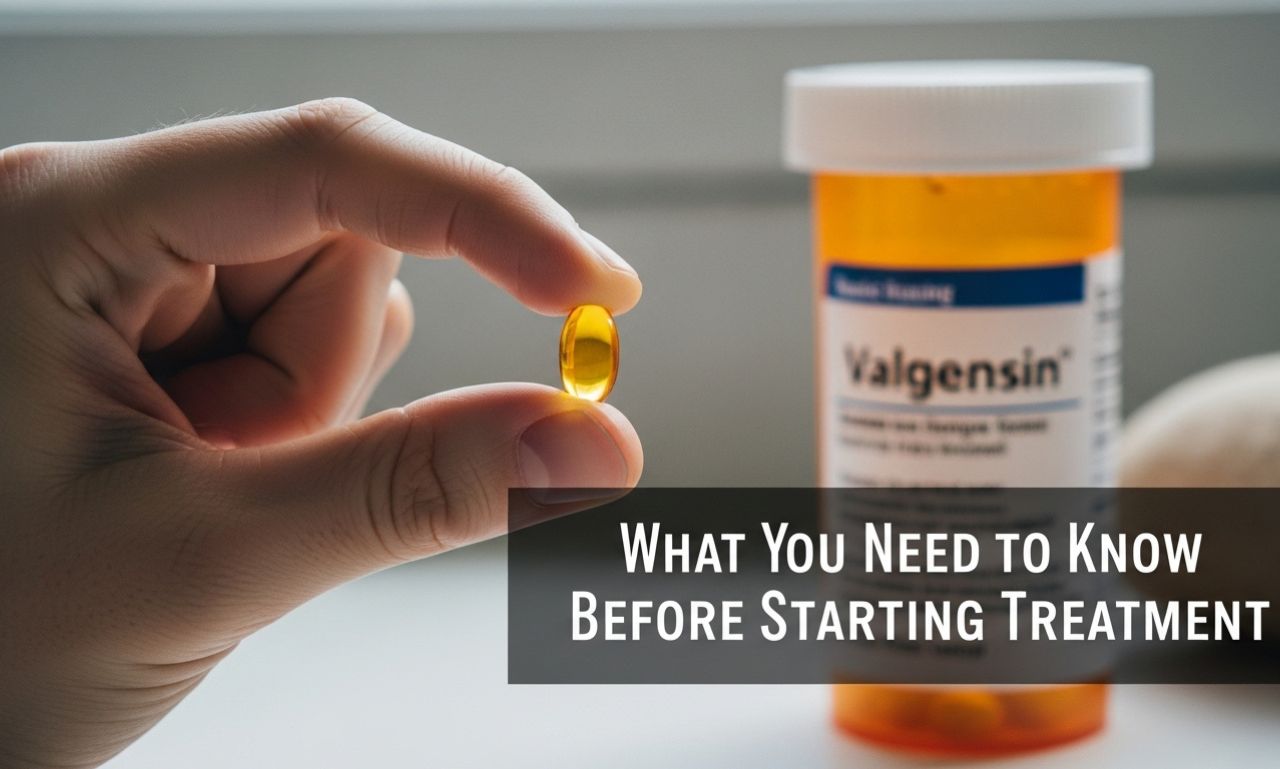Valgensin: What You Need to Know Before Starting Treatment

Valgensin is making waves in the world of medical treatments, and for good reason. As more people seek effective solutions for managing their health conditions, this medication has emerged as a promising option. But before you dive into treatment, it’s essential to understand what Valgensin can do and how it may fit into your healthcare journey. Whether you’re experiencing symptoms that could benefit from its use or simply exploring alternatives, knowing the ins and outs of Valgensin can empower you to make informed decisions about your health. Let’s explore what makes Valgensin stand out and what considerations you should keep in mind before starting treatment.
What is Valgensin and How Does it Work?
Valgensin is a medication designed to tackle specific health issues, primarily focusing on cardiovascular conditions. It belongs to a class of drugs that enhance blood flow and improve heart function.
The active ingredient works by targeting receptors in the body that regulate vascular tone. By relaxing blood vessels, it allows for better circulation and reduces strain on the heart.
Patients typically use Valgensin to manage symptoms associated with hypertension or certain types of heart failure. Its mechanism ensures that oxygen-rich blood reaches vital organs efficiently.
Clinical studies have shown promising results, indicating significant improvements in patients’ quality of life. Regular monitoring during treatment helps ensure optimal outcomes. As always, it’s essential to discuss any new medication with your healthcare provider before starting therapy.
Benefits of Valgensin Treatment
Valgensin offers several benefits that can significantly improve the quality of life for those who use it. One of its primary advantages is its effectiveness in managing symptoms, providing relief where traditional treatments may fall short.
Patients often report enhanced well-being and increased energy levels, making daily activities more manageable. This uplift in mood can lead to improved motivation and overall happiness.
Additionally, Valgensin has a favorable safety profile compared to other medications within the same category. Many users experience fewer side effects, which contributes to better adherence to treatment plans.
This medication also supports long-term health goals by working on underlying issues rather than just alleviating surface symptoms. Users may find themselves enjoying a more balanced lifestyle as they integrate this treatment into their routines.
Potential Side Effects of Valgensin
As with any medication, Valgensin comes with potential side effects that users should be aware of. While many people tolerate it well, some individuals may experience adverse reactions.
Common side effects might include mild nausea or headaches. These symptoms often resolve on their own as the body adjusts to the treatment.
In rarer cases, more serious side effects can occur. Some users have reported changes in mood or unusual fatigue. It’s essential to monitor your body’s response during treatment and communicate any concerns to your healthcare provider.
Allergic reactions are also possible but infrequent. Symptoms like rash, itching, or swelling warrant immediate medical attention if they arise.
Understanding these potential side effects helps you make informed decisions about your health journey with Valgensin. Always consult a doctor for personalized advice tailored to your situation.
Precautions and Warnings Before Starting Valgensin Treatment
Before starting Valgensin treatment, it’s vital to discuss your medical history with your healthcare provider. Certain pre-existing conditions could affect how you respond to the medication.
Pregnant or breastfeeding individuals should approach Valgensin cautiously. The effects on fetal development or nursing infants are not fully understood. Always consult a doctor before making any decisions.
If you’re taking other medications, inform your physician about them as well. Interactions can lead to unpredictable results and may alter the effectiveness of both drugs.
Monitoring is essential during treatment. Regular check-ups can help assess how well Valgensin is working and if any side effects arise. Be proactive in communicating any unusual symptoms you experience while undergoing therapy.
Remember that everyone’s body reacts differently to medications. Personal factors play a significant role in determining whether this treatment aligns with your health needs.
Other Factors to Consider Before Starting Valgensin Treatment
Before starting Valgensin treatment, it’s essential to evaluate your lifestyle and health conditions. Consider any underlying medical issues that may affect the treatment’s effectiveness.
Dietary habits can play a significant role in how Valgensin works for you. Discussing your nutrition with a healthcare provider can help tailor the treatment plan.
Also, consider potential drug interactions if you’re taking other medications. A thorough medication review is crucial to avoid complications.
Mental health should not be overlooked either. Stress or anxiety might impact how well you respond to Valgensin, so addressing mental wellness could enhance overall results.
Stay informed about ongoing research related to Valgensin. New findings may provide insights that influence your decision-making as you prepare for treatment.
Is Valgensin Right for You?
Choosing whether Valgensin is right for you involves careful consideration. It’s essential to assess your current health conditions and any medications you are taking.
Consulting with a healthcare provider can provide personalized insights based on your medical history. They can help identify if Valgensin aligns with your treatment goals.
Each individual reacts differently to medications, so monitoring how you feel during the initial stages of treatment is crucial. Note any changes or unusual symptoms that arise.
Additionally, think about lifestyle factors such as diet, exercise, and stress levels. These elements might influence the effectiveness of Valgensin in your journey.
Finding the best treatment option requires an open dialogue between you and your healthcare professional. This partnership is vital for navigating choices like Valgensin effectively.
Conclusion
Valgensin has emerged as a significant option for those seeking effective treatment in managing their specific health conditions. Understanding what Valgensin is and how it works provides a solid foundation for anyone considering this medication. The benefits, including improved quality of life and targeted symptom relief, make it appealing to many patients.
However, it’s essential to be aware of potential side effects that may accompany its use. These can vary from mild reactions to more serious concerns, so discussing these with your healthcare provider is crucial. Additionally, precautions and warnings should never be overlooked; they play an important role in ensuring safe usage.
Before starting on Valgensin, consider other factors such as pre-existing health conditions or concurrent medications that might interact negatively. All these aspects are vital when evaluating if Valgensin aligns with your personal health journey.
The decision about whether is right for you should involve thorough discussions with medical professionals who understand your unique situation and needs. Taking these steps will help ensure you make an informed choice tailored specifically to you.
